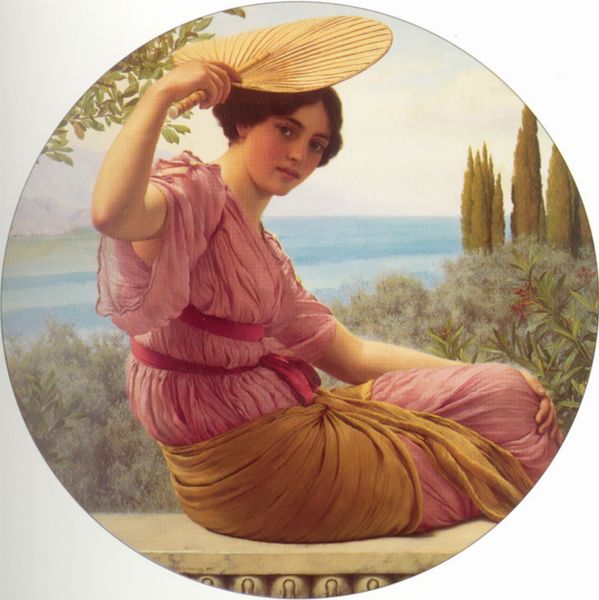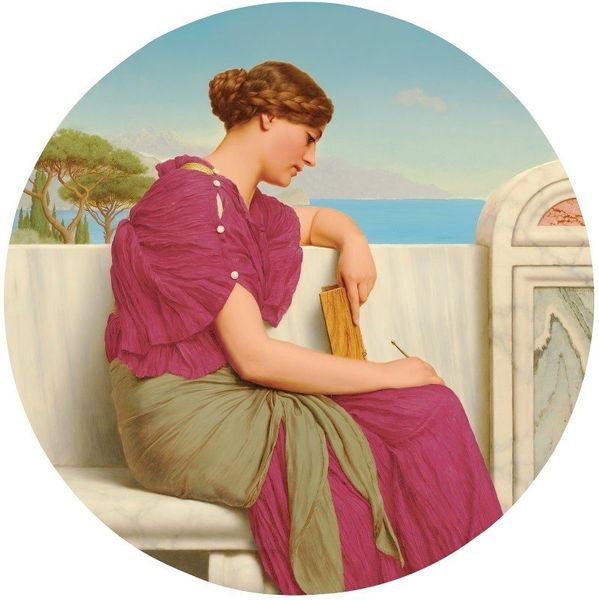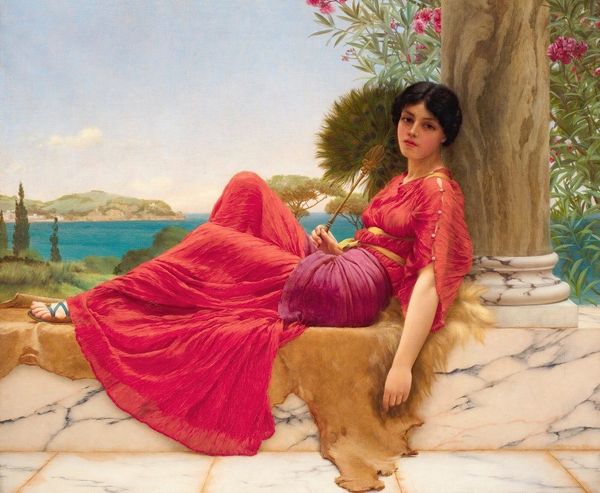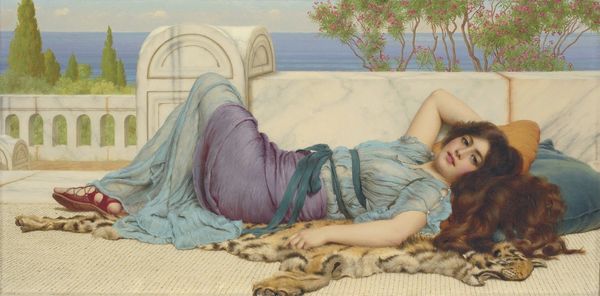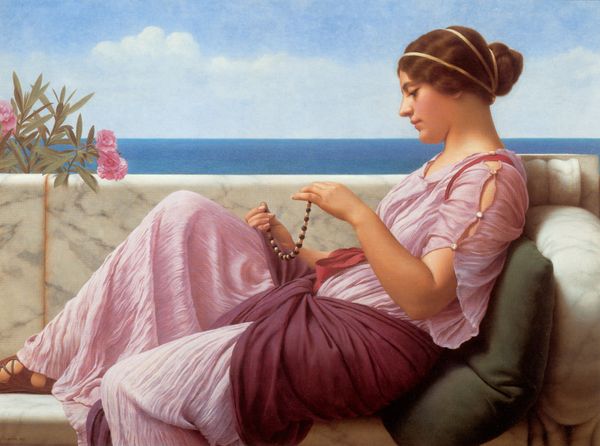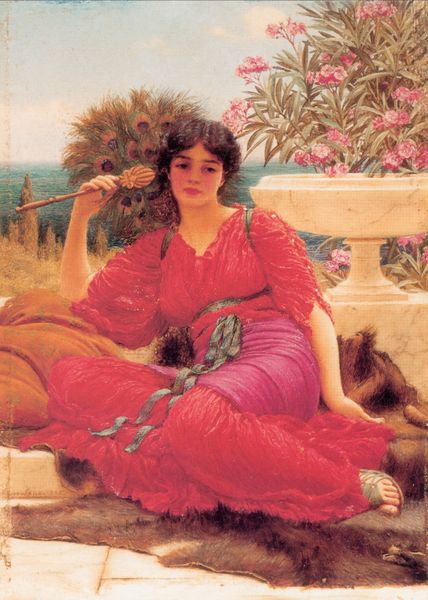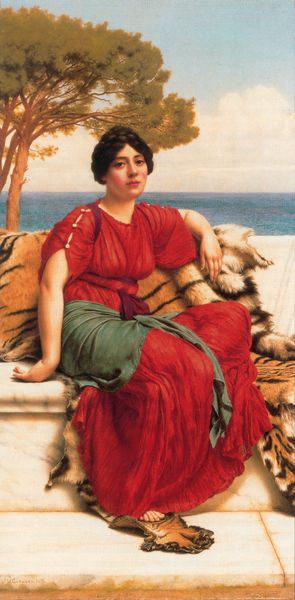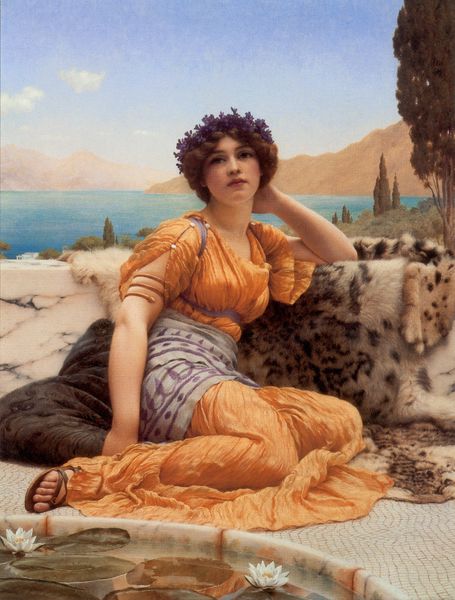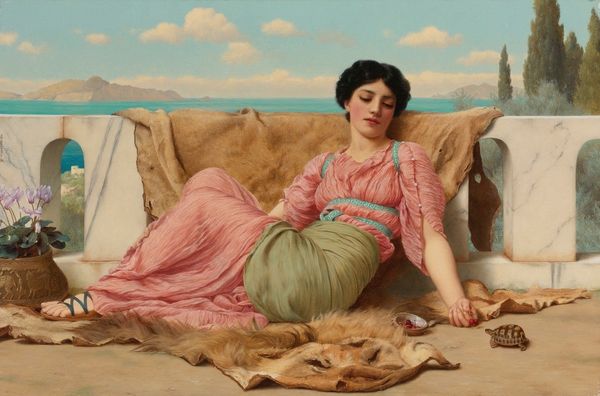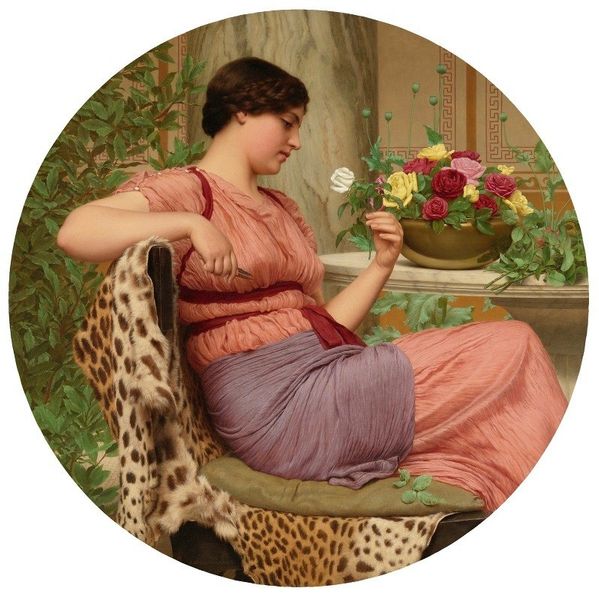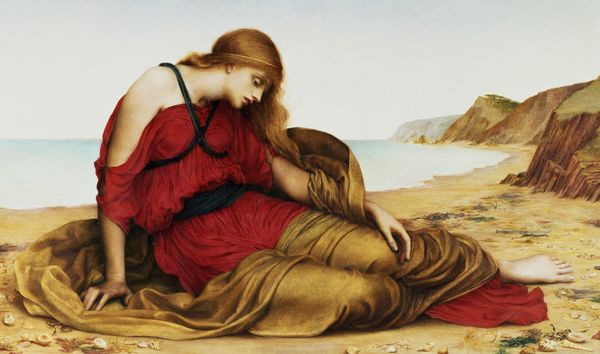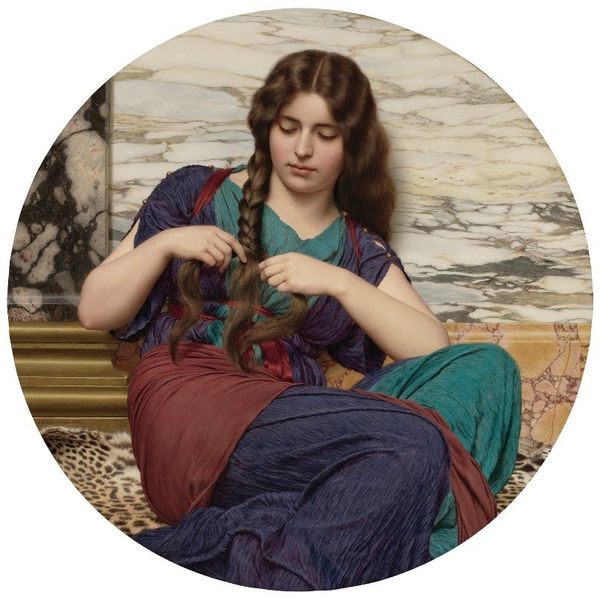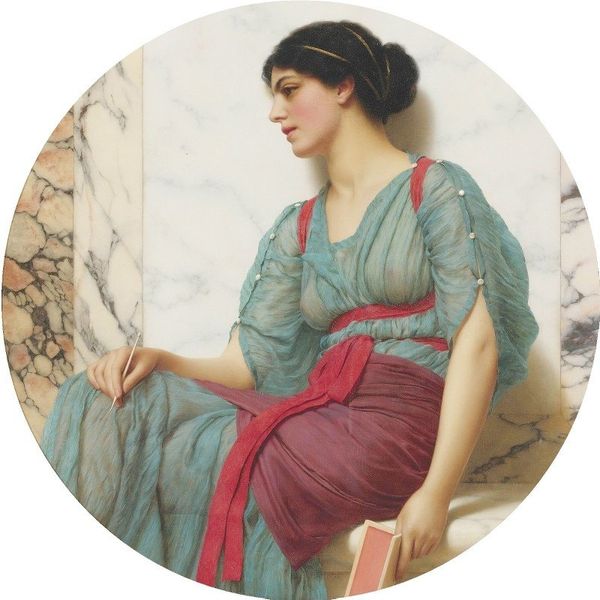
Copyright: Public domain
Curator: Immediately, I'm struck by this overwhelming feeling of tranquility, of suspended animation almost. The vibrant reds of her gown juxtapose beautifully against the hazy blues of the distant sea. Editor: Indeed, it is a very placid scene. What we’re looking at is John William Godward's "In Realms of Fancy," painted in 1911. The painting, rendered in oil on canvas, exemplifies Godward's meticulous technique and his penchant for portraying women in classical settings. Curator: Classical indeed! Note the deliberate use of Greco-Roman motifs - the marble bench, the draping of her garment. It's as if he’s trying to evoke a certain cultural memory, tapping into our collective fascination with that era. And look at the details in the fabric – almost pre-Raphaelite in their precision! I wonder if the circle format has to do with classical tondos… Editor: That’s an astute observation! The tondo form, popularized during the Renaissance, often implied timelessness, and harkened back to ancient cameos and plates. Beyond the overt references to antiquity, one must also consider the social context of its creation. Godward and others within his artistic circle constructed idealized versions of the classical world that conveniently omitted elements that would prove disagreeable to early 20th-century sensibilities, like enslavement or patriarchy. Curator: Right. This image then, performs a function of both revealing and concealing, it gestures towards the "real" world, while carefully masking less desirable components. Do you think that its popularity speaks to an underlying escapism present at the time? Editor: Undoubtedly! The dawn of the 20th century brought rapid social and technological change, creating a yearning for a perceived simpler past. This work offered a temporary reprieve from industrial anxieties. The woman herself remains ambiguous. Curator: The viewer becomes absorbed in her world of reverie, where a relaxed female form exists within a curated fantasy world. It becomes an emblem for aesthetic freedom and perhaps unconscious resistance to societal constraints. What do you think about how this style played into or against established institutions? Editor: It was, in some respects, complicit. By adhering to the then-reigning academic standards, Godward attained recognition and success, and contributed to shaping public taste. However, tastes shifted, and what once constituted radical realism eventually began appearing sentimental. Curator: Which ultimately is what gives the piece its specific historical resonance. It marks a fleeting point in time. It’s not only an artwork, but also a marker of a particular way of viewing beauty and of womanhood. Editor: Precisely, and exploring the intricacies within such paintings allows us to decipher the underlying complexities of cultural shifts and enduring legacies.
Comments
No comments
Be the first to comment and join the conversation on the ultimate creative platform.
